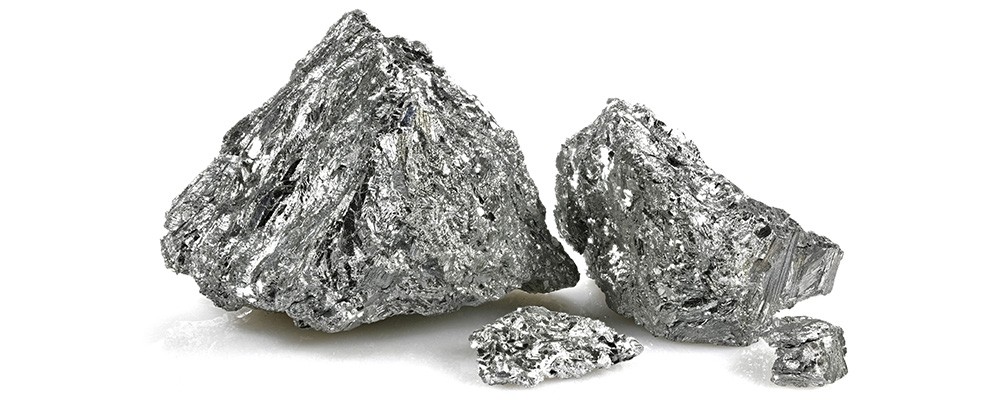Filter
Looking for something?
If you do not see anything that suits your needs, please get in touch with your requirements.
Custom EnquirySb Rod Diameter 3.175mm (0.125")
Antimony
Sb Rod Diameter 6.35mm (0.250")
Antimony
Sb Rod Diameter 12.7mm (0.500")
Antimony
Sb Rod Diameter 15.88mm (0.625")
Antimony
Sb Rod Diameter 19.05mm (0.750")
Antimony
Sb Rod Diameter 25.4mm (1.0")
Antimony
Antimony Sb, Available purities 99.99% & 99.999%
Antimony Selenide Sb2Se3, Available purities 99.99% & 99.999%
Antimony sulphide Sb2S3, Available purity 99.99%
Sb2Te3 TRG 50.8mm dia. x 5mm Tk 99.9%+ Pure
Antimony Telluride
Sb2S3 TRG 50.8mm dia. x 3mm Tk 99.99% Pure
Antimony Sulphide
Sb2S3 TRG 76.2mm dia. x 6mm Tk 99.99% Pure
Antimony Sulphide
Overview
Antimony (chemical symbol Sb) is a lustrous, brittle, silvery-grey metalloid that belongs to Group 15 (Nitrogen Group) of the periodic table. It is primarily found in nature as the sulphide mineral stibnite (Sb₂S₃) and has been known and used since ancient times, particularly in alloys and cosmetics. Antimony’s unique combination of metallic and non-metallic properties makes it valuable in a wide range of industrial applications.
Properties
Antimony has several distinct properties that define its uses. It has an atomic number of 51 and an atomic mass of 121.76 u, and it is characterised by its relatively high melting point of 630.6 °C and boiling point of 1,580 °C. Antimony is a poor conductor of heat and electricity and is relatively stable at room temperature, resisting corrosion by air and moisture. Its brittle nature means it cannot be used in structural applications on its own, but it becomes useful when alloyed with other metals.
Applications and Uses
The primary use of antimony is as a hardening agent in lead alloys, which are employed in batteries, ammunition, and low-friction metals. Antimony compounds, such as antimony trioxide, are used as flame retardants in textiles, plastics, and electronic devices due to their ability to inhibit the spread of flames. Antimony is also utilised in the production of semiconductors, glass, ceramics, and pigments, where it imparts unique optical and thermal properties. In the chemical industry, antimony is used as a catalyst in the manufacture of certain plastics, such as PET (polyethylene terephthalate).
Summary
Overall, antimony’s diverse properties make it a valuable element in many sectors, from electronics and flame retardants to alloys and chemicals. Despite its brittle nature, its ability to enhance the properties of other materials ensures that antimony remains an important element in modern industrial processes.
